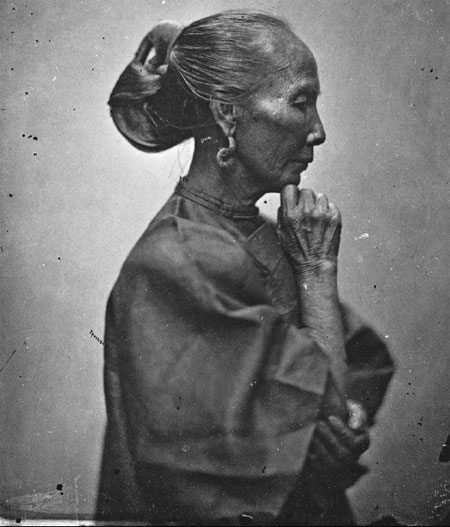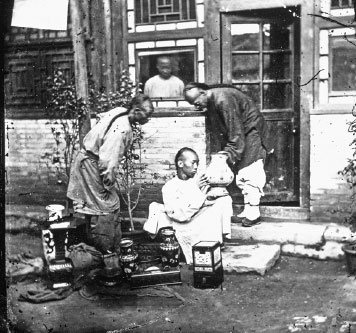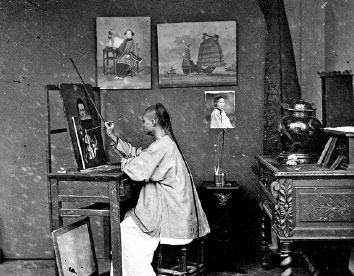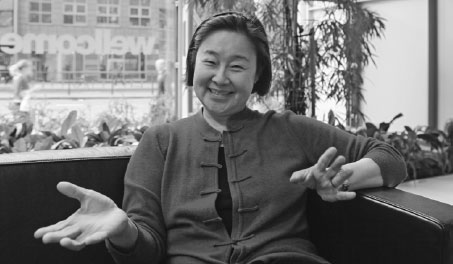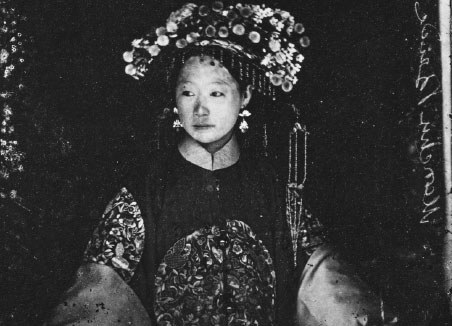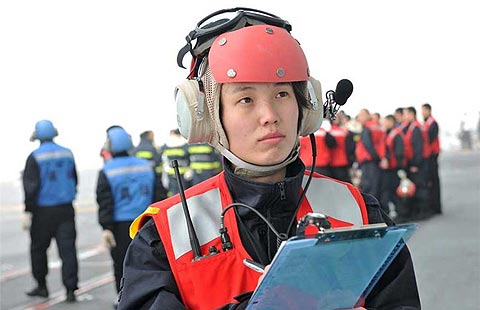19th century photos reveal past
Updated: 2014-04-15 07:16
By Cecily Liu (China Daily)
|
||||||||
A treasure trove of rare photographic images from China in the 1800s gives a glimpse of everyday life, captured by a daring Scottish photographer. Cecily Liu reports.
Betty Yao says her life has been changed by the photographs of John Thomson, the celebrated Scotsman who was one of the first professional photographers to document 19th- century China.
In fact, Yao was so touched by the authenticity of the photographs when she first saw them in 2006 that she decided on a major career change. The photographs inspired her to give up her job as a program director at the charity Asia House in London to become a curator. In 2009, she took an exhibition of Thomson's China work around the world, and this year she is taking the show back to China.
"Thomson was interested in Chinese people," Yao says. "He respected them, and documented their daily lives in an objective way, some beautiful and some not so beautiful."
Thomson's approach to China was unique, Yao says, as many Western photographers in the Victorian era saw Asians as specimens, and chose to document their ugly or extreme sides, including people in prisons or bodies with heads chopped off.
But Thomson's photographs depicted a variety of people, including those on the streets, fruit sellers, antique dealers examining porcelain and women with elaborate clothes and jewelry busy with their daily activities.
The photographs brought out the diversity of personalities of ordinary Chinese at that time, and highlighted China's street scenes, habits, dress codes and popular activities. They serve as interesting historical material as well as fine photographs.
"As a professional photographer, he had to make money by photographing the rich and famous. But he also photographed ordinary people with equal dignity," Yao says.
Thomson was born in 1837, two years before the invention of the daguerreotype, the first photographic process. After an early career working as an apprentice to an optician and scientific instrument maker, Thomson embarked on a journey in the 1860s to photograph countries in South and Southeast Asia.
In 1868 he arrived in Hong Kong and established a studio in Queen's Road in Central District. During this period, he photographed many of Hong Kong's mountain ranges, plains, rooftops and street scenes. During 1870-72, he made many journeys to Guangdong, Hainan, Fujian, Nanjing, Beijing, Tianjin, Taiwan and Macao.
On these travels, Thomson received much hospitality but also some hostility, as many Chinese people were not familiar with cameras and had never seen a Caucasian man.
But the challenges did not reduce Thomson's passion for photography. He stayed in China until 1872, and returned to Britain with three crates of glass negatives.
In later years, Thomson went on to document the lives of London's homeless, while serving as the official photographer of the British royal family. After his death in 1921, his glass negatives were bought by the pharmaceutical tycoon Sir Henry Wellcome.
The purchase was fortunate, as the Wellcome Library was one of the very few places that could store such fragile glass negatives, though at the time no one understood how valuable Thomson's negatives were.
William Schupbach, iconographic collections librarian for the Wellcome Trust, first came across the three crates in the 1970s, and noticed they were labeled "scratched negatives".
He studied the images in detail and realized they were of historical value. His team then made prints from the negatives and catalogued each photograph. They have since been digitalized.
In 2006, Yao came across them in the Wellcome Library. Upon discovering that they had never been exhibited in China, Yao volunteered to curate the exhibition, and the project went from strength to strength.
In 2009, Yao took the exhibition to four Chinese museums: Beijing World Art Museum, Fujian Museum, Guangzhou Museum and Dongguan Exhibition Center. Subsequently the photographs toured internationally, including to Britain, Sweden, Ireland and the United States.
The photographs attracted widespread international acclaim.
"The exhibition is astonishing," says Scottish curator Katriana Hazell, who saw the exhibition in Liverpool, England. "How else can we possibly get so vivid an idea of such a wide range of society and life in China at that time?"
"I feel other photographers of that period were colder in their portraiture. I get more of a sense that these photographers were making scientific studies of the local people, especially the poor."
Hazell says details, such as the binding of women's feet, hairstyles and clothing drew her to the collection.
"The wealth of rich detail about street life was particularly fascinating - people gambling, the one of the chiropodist working in the street, the artisans, and especially noticeable, the many, many photographs of women, and their extraordinary exotic hairstyles worn by both grand and ordinary women."
This year, the exhibition is returning to China, to be shown at Shenzhen Museum, Jiangning Imperial Silk Manufacturing Museum in Nanjing and China National Silk Museum in Hangzhou.
"I hope this exhibition will inspire young artists, and China's future designers, to look at the jewelry, hairstyle and shoes, and be inspired to create something new," Yao says. "I hope the visitors will be able to engage with the images, and not just look at them as a part of memory and history."
"In China today there are a lot of television dramas set in the Qing Dynasty (1644-1911), but I'd say maybe some of the costume design is not authentic," Yao says. She believes that the Chinese found it hard to document their own history as local photographers in Thomson's era were not as well trained as he was.
Yao says she also found Thomson's depiction of Chinese women very interesting. Her favorites are two portraits of contrasting women, one of a beautiful young bride showing traces of sorrow and the other of a boatwoman expressing her freedom.
"The young Manchu bride was getting married, her clothes are very beautiful, but if you look at her eyes they are tinged with sadness. Her life is predictable, and she has to fall into the ways of her husband's family and live the rest of her life that way."
"That contrasts with the other photograph of a Guangdong boatwoman wearing a simple cotton shirt. Thomson was able to capture her eyes, and there is a sense of freedom in them. She is not necessarily rich, but she is free."
Thomson's ability to capture such intricate details of the women's inner feelings fascinates Yao, especially because his camera was heavy and exposure times were slow. "Even today, it's hard to capture women's inner feelings, yet Thomson did it quite successfully."
China: Through the Lens of John Thomson 1868-1872 runs at Shenzhen Museum from March 20 to May 20, Jiangning Imperial Silk Manufacturing Museum in Nanjing from July 18 to Aug 20, and China National Silk Museum in Hangzhou from Aug 9 to Oct 7.
Contact the writer at cecily.liu@chinadaily.com.cn.
|
An old woman in Canton (Guangdong). Photos provided to China Daily |
|
Tradesmen selling a selection of vases. |
|
An artist in Hong Kong. |
|
Betty Yao says Thomson's images serve as interesting historical material as well as fine photographs. Cecily Liu / China Daily |
|
A Thomson photograph captures a young Manchu bride in Peking (Beijing). |

 'Taken 2' grabs movie box office crown
'Taken 2' grabs movie box office crown
 Rihanna's 'Diamonds' tops UK pop chart
Rihanna's 'Diamonds' tops UK pop chart
 Fans get look at vintage Rolling Stones
Fans get look at vintage Rolling Stones
 Celebrities attend Power of Women event
Celebrities attend Power of Women event
 Ang Lee breaks 'every rule' to make unlikely new Life of Pi film
Ang Lee breaks 'every rule' to make unlikely new Life of Pi film
 Rihanna almost thrown out of nightclub
Rihanna almost thrown out of nightclub
 'Dark Knight' wins weekend box office
'Dark Knight' wins weekend box office
 'Total Recall' stars gather in Beverly Hills
'Total Recall' stars gather in Beverly Hills
Most Viewed
Editor's Picks

|
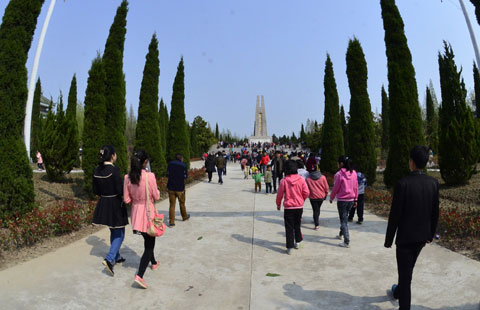
|
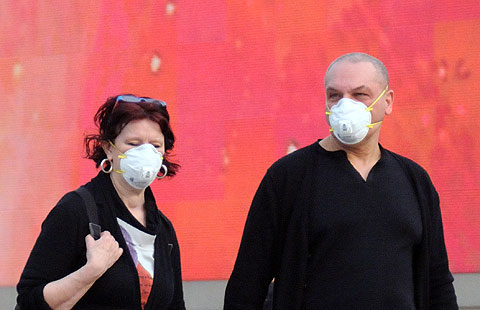
|
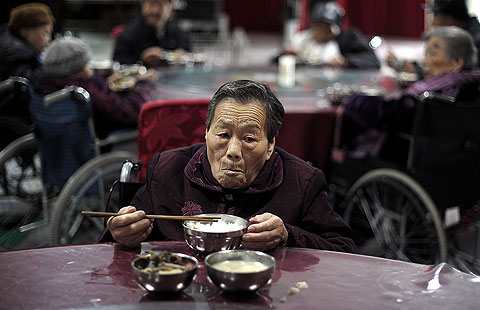
|
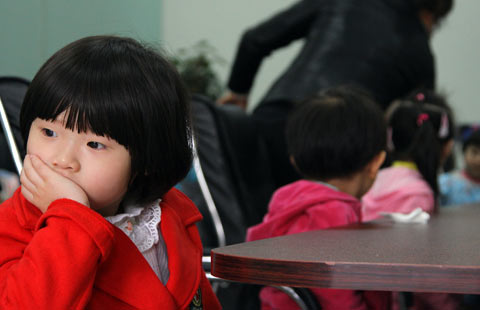
|
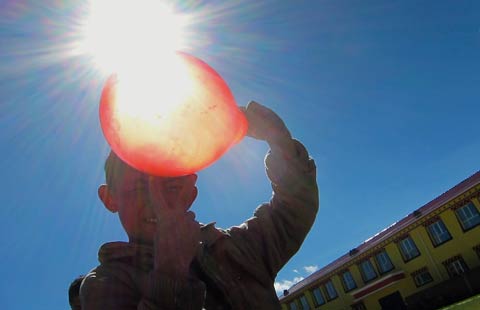
|
Today's Top News
Fair shadowed by weak exports
Snowden stories win Pulitzers
Xi calls for joining space and air roles
Utah mom admitted to killing babies
Beijing among 'most global' cities
Foreign investment laws will be revised
China expanding global corn trade
Robotic submarine to search for jet
US Weekly

|

|
